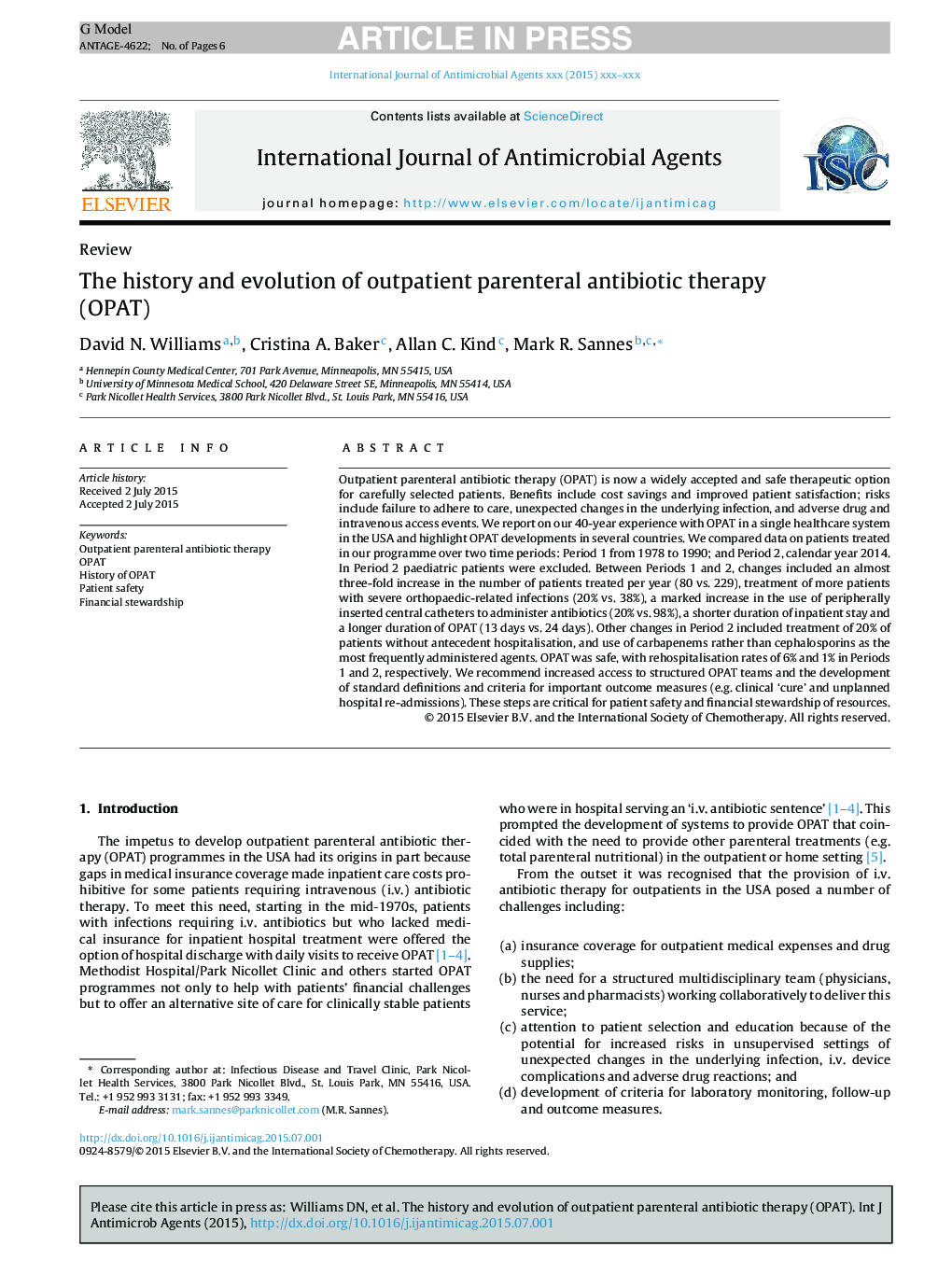| Article ID | Journal | Published Year | Pages | File Type |
|---|---|---|---|---|
| 6117639 | International Journal of Antimicrobial Agents | 2015 | 6 Pages |
Abstract
Outpatient parenteral antibiotic therapy (OPAT) is now a widely accepted and safe therapeutic option for carefully selected patients. Benefits include cost savings and improved patient satisfaction; risks include failure to adhere to care, unexpected changes in the underlying infection, and adverse drug and intravenous access events. We report on our 40-year experience with OPAT in a single healthcare system in the USA and highlight OPAT developments in several countries. We compared data on patients treated in our programme over two time periods: Period 1 from 1978 to 1990; and Period 2, calendar year 2014. In Period 2 paediatric patients were excluded. Between Periods 1 and 2, changes included an almost three-fold increase in the number of patients treated per year (80 vs. 229), treatment of more patients with severe orthopaedic-related infections (20% vs. 38%), a marked increase in the use of peripherally inserted central catheters to administer antibiotics (20% vs. 98%), a shorter duration of inpatient stay and a longer duration of OPAT (13 days vs. 24 days). Other changes in Period 2 included treatment of 20% of patients without antecedent hospitalisation, and use of carbapenems rather than cephalosporins as the most frequently administered agents. OPAT was safe, with rehospitalisation rates of 6% and 1% in Periods 1 and 2, respectively. We recommend increased access to structured OPAT teams and the development of standard definitions and criteria for important outcome measures (e.g. clinical 'cure' and unplanned hospital re-admissions). These steps are critical for patient safety and financial stewardship of resources.
Related Topics
Life Sciences
Immunology and Microbiology
Applied Microbiology and Biotechnology
Authors
David N. Williams, Cristina A. Baker, Allan C. Kind, Mark R. Sannes,
